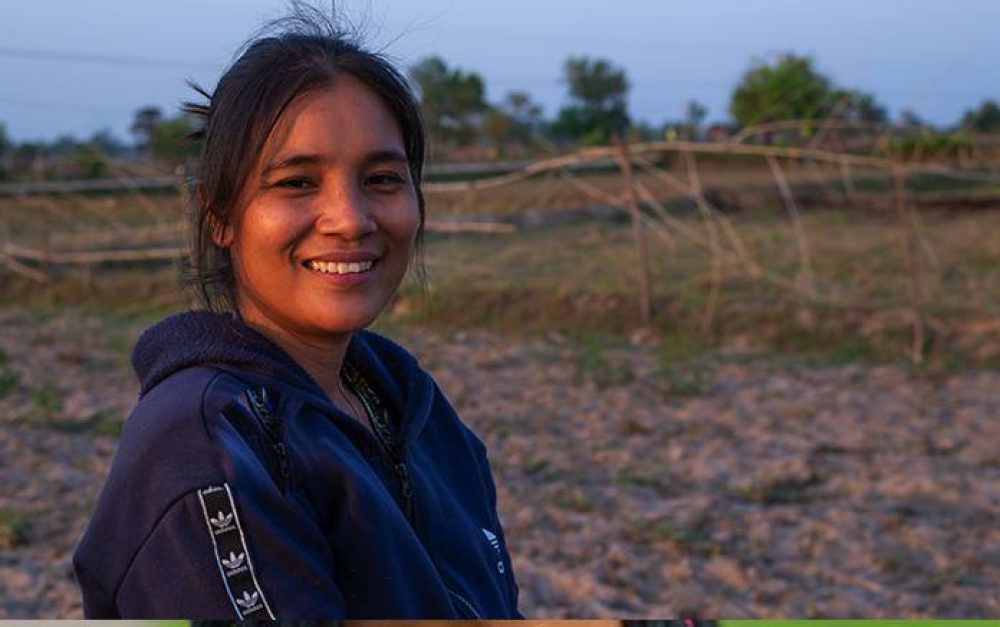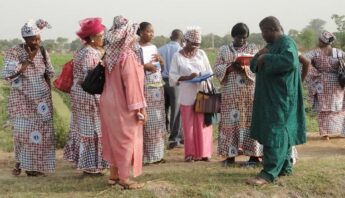In the United States, women own or co-own roughly half the agricultural land in the United States; 52% of restaurant workers are women, and 36% of farmers are women. We know that women are integral to food production, processing, and preparation in the U.S. and globally, and we see that women are leading efforts to transform food and farming toward a system characterized by sustainability, health, and justice.
This is a repost of a blog originally published on the Women Food and Agriculture Nework.
Tuesday, Oct. 15, marks International Day of Rural Women. It’s fitting that this day falls in the middle of the Global Food Week of Action (Oct. 13-20); after all, women farmers and farmworkers produce and process more than half the world’s food.
In the United States, women own or co-own roughly half the agricultural land in the United States; 52% of restaurant workers are women, and 36% of farmers are women. We know that women are integral to food production, processing, and preparation in the U.S. and globally, and we see that women are leading efforts to transform food and farming toward a system characterized by sustainability, health, and justice.
However, this transformative work is hard. We’re up against a food and farm system that simply doesn’t work for us and our communities. From hunger and malnutrition, to gender-based discrimination and violence on the job, to unpaid and underpaid labor, the data paints a grim picture of women in food and farming: structural, gender-based oppression, or patriarchy, impacts the way we eat, work, farm, and live.
The building blocks of food and farming: Inequality
In the U.S., a tremendous racialized and gendered wage gap persists. Consequently, the distribution of malnutrition and food insecurity is inequitable as well. For every dollar a man earns, Black women are paid 70 cents, Latina women are paid 63 cents, and white women are paid 84 cents; meanwhile, female-headed households are roughly 25% more likely to be food insecure than their male counterparts.
All the while, women farm operators earn 61 cents for every dollar a male earns—and that’s controlling for work time, farm assets, farm type, age, experience, and location. Similarly, women food chain workers face both a racial and gender disparity: for every dollar earned by white men, Black women earn 42 cents, Latina women earn 45 cents, Asian women earn 58 cents, Native women earn 36 cents, and white women earn 47 cents. Further, transgender, non-binary and gender non-conforming people face additional discrimination and violence. The National Center for Transgender Equality (NCTE) reports that 1 in 4 people has experienced bias-driven assault, with rates higher for trans women and trans people of color.
And this inequality isn’t an accident; it is part of what makes the modern industrial food system work. Today’s economies were built via the exploitation of people, nature, and communities—the theft of Native land that was later plowed and tilled and the enslavement of human beings stolen from across Africa to provide agricultural labor are only two examples.
Today, the exploitation continues. From disparate food and farm wages to sexual reproduction and the maintenance of households—women’s labor, and in particular, the labor of women of color, is not equitably valued in our industrial food system. Ultimately, our unpaid and underpaid labor subsidizes the profits of the multi-trillion dollar industrial food system.
Our power
Despite the challenges we face, we are engaged in the work of real change—feeding our communities and changing power relations to transform our food and farm system to one that prioritizes care rather than exploitation. This International Day of Rural Women, we’re inspired by the people we know doing the transformative work we all need. Together, we are fighting for fair wages for food system workers, transitioning land from conventional to organic, demanding protections for women farmworkers, calling for farm policy that addresses climate-related impacts of agriculture, creating spaces for LGBTQQIA farmers, building support for reparations for Black farmers, developing policies to protect each other from pesticide spray drift, demanding Indigenous land sovereignty, and mentoring the next generation to continue this important work.
This groundswell of revolutionary solutions exemplifies the future of food and farming, and we are creating these changes through our communities, together. Women, Food and Agriculture Network knows our experiences and knowledge are powerful. For example, our Plate to Politics program empowers rural and agricultural leaders across the country to put their visions for a healthier food and farming system into action, through advocacy, activism, and policy leadership. Through our Women Caring for the Land program, we’re bringing women landowners together to increase the adoption of conservation practices that protect our soil and water. Harvesting Our Potential trains women to be farmers through on-farm mentorships. A recent participatory research project in Iowa’s most agriculturally polluted watershed illustrated the power women have in creating change on the land. Our research shows that the networks these programs create are paramount to shifts in power, be it in farm decision-making or agricultural policy.
This International Day of Rural Women, we’re grateful for all the people transforming our food and farm system. Today and every day, together, we will continue to build and nurture the relationships that are catalyzing real change, right now.







